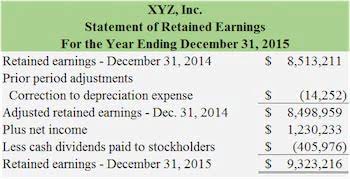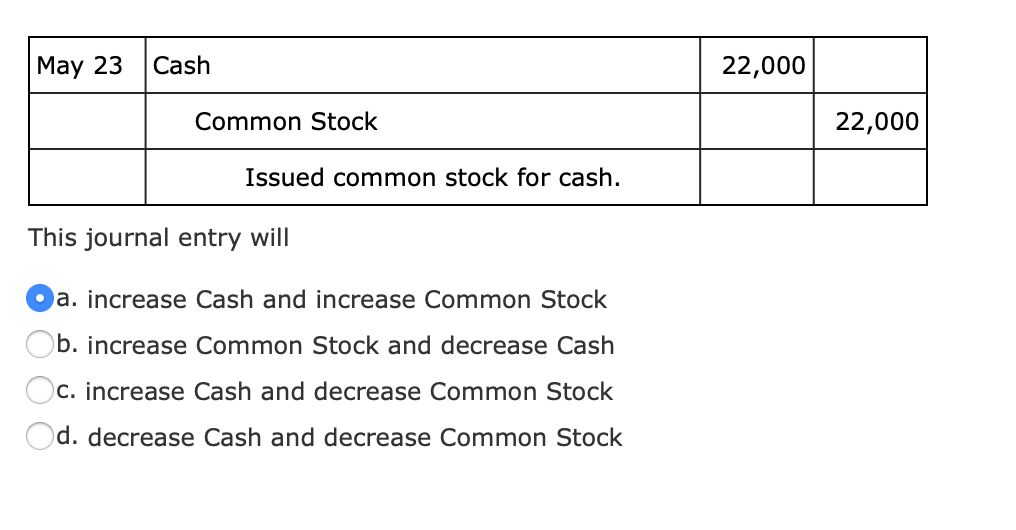If a company decides to purchase a fixed asset (PP&E), the total cash expenditure is incurred in once instance in the current period. In theory, depreciation attempts to match up profit with the expense it took to generate that profit. An investor who ignores the economic reality of depreciation expenses may easily overvalue a business, and his investment may suffer as a result. Instead of realizing a large one-time expense for that year, the company subtracts $1,500 depreciation each year for the next five years and reports annual earnings of $8,500 ($10,000 profit minus $1,500). This calculation gives investors a more accurate representation of the company’s earning power. Net income is the number left over after all cost of goods sold, operating expenses, selling, general, and administrative expenses, depreciation, interest, taxes, and any other expenses have been accounted for.
The accumulated depreciation balance increases over time, adding the amount of depreciation expense recorded in the current period. In trial balance, the accumulated depreciation expenses are the contra account of the fixed assets accounts. Depreciation also affects your business taxes and is included on tax statements. A.The portion of the cost of a fixed asset deducted from revenue of the period is debited to Depreciation Expense. The reduction in the fixed asset account is recorded by a credit to Accumulated Depreciation rather than to the fixed asset account.
The straight-line method of depreciation will result in depreciation of $1,000 per month ($120,000 divided by 120 months). When depreciation expenses appear on an income statement, rather than reducing cash on the balance sheet, they are added to the accumulated depreciation account. Depreciation expense is recorded on the income statement as an expense or debit, reducing net income. Instead, it’s recorded in a contra asset account as a credit, reducing the value of fixed assets. It is accounted for when companies record the loss in value of their fixed assets through depreciation.
- Accumulated depreciation is typically shown in the Fixed Assets or Property, Plant & Equipment section of the balance sheet, as it is a contra-asset account of the company’s fixed assets.
- Accumulated depreciation is the total amount of depreciation expenses that have been charged to expense the cost of an asset over its lifetime.
- Under the declining balance method, depreciation is recorded as a percentage of the asset’s current book value.
- This calculation gives investors a more accurate representation of the company’s earning power.
- By understanding its extent, investors and financial analysts can better assess the condition of the company’s assets and gauge their remaining useful life.
You record depreciation expense on the income statement and record accumulated depreciation as a contra asset account on the balance sheet. Accumulated depreciation is the total depreciation for a fixed asset that has been charged to expense since that asset was acquired and made available for use. The accumulated depreciation account is a contra asset account on a company’s balance sheet, meaning it has a credit balance. It appears on the balance sheet as a reduction from the gross amount of fixed assets reported. Accumulated depreciation is the total amount a company depreciates its assets, while depreciation expense is the amount a company’s assets are depreciated for a single period.
Accumulated Depreciation Limitations
The following illustration walks through the specifics of accumulated depreciation, how it’s determined, and how it’s recorded in the financial statements. First the company must determine the value of the asset at the end of its useful life. This salvage value, or residual value, is subtracted from the purchase price and then divided by the number of years in the asset’s useful life.
- In this example, we’ll follow the standard straight-line depreciation method.
- Each month $1,000 of depreciation expense is being matched to the 120 monthly income statements during which the displays are used to generate sales revenues.
- Accumulated depreciation is the cumulative amount of depreciation that has piled up since the initiation of depreciation for each asset.
- Depreciation expense is recognized on the income statement as a non-cash expense that reduces the company’s net income.
On the balance sheet, the carrying value of the net PP&E equals the gross PP&E value minus accumulated depreciation – the sum of all depreciation expenses since the purchase date – which is $50 million. In accrual accounting, the “Accumulated Depreciation” on a fixed asset refers to the sum of all depreciation expenses since the date of original purchase. Some investors and analysts maintain that depreciation expenses should be added back into a company’s profits because it requires no immediate cash outlay.
In our PP&E roll-forward, the depreciation expense of $10 million is recognized across the entire forecast, which is five years in our illustrative model, i.e. half of the ten-year useful life. A contra asset is defined as an asset account that offsets the asset account to which it is paired, i.e. the reverse of the standard impact on the books. Yet, the capital expenditure (Capex) must be spread across the useful life of the fixed asset per the matching principle, i.e. the number of years in which the fixed asset is expected to provide benefits. The purpose of depreciation is to match the timing of the purchase of a fixed asset (“cash outflow”) to the economic benefits received (“cash inflow”). In a very busy year, Sherry’s Cotton Candy Company acquired Milly’s Muffins, a bakery reputed for its delicious confections. After the acquisition, the company added the value of Milly’s baking equipment and other tangible assets to its balance sheet.
Because the depreciation process is heavily rooted in estimates, it’s common for companies to need to revise their guess on the useful life of an asset’s life or the salvage value at the end of the asset’s life. For example, a company buys a company vehicle and plans on driving the vehicle 80,000 miles. Therefore, it would recognize 10% or (8,000 ÷ 80,000) of the depreciable base. Liabilities represent obligations or debts a company owes, such as loans or accounts payable. Accumulated Depreciation is not considered an expense that affects the determination of net income. Accumulated Depreciation is a valuable information source regarding an asset’s age and condition.
When to Use Depreciation Expense Instead of Accumulated Depreciation
Using our example, the monthly income statements will report $1,000 of depreciation expense. The quarterly income statements will report $3,000 of depreciation expense, and the annual income statements will report $12,000 of depreciation expense. Each month $1,000 of depreciation expense is being matched to the 120 monthly income statements during which the displays are used to generate sales revenues.
Sum-of-the-Years’ Digits Method
Understanding accumulated depreciation and its interplay with an asset’s historical cost and net book value is fundamental to financial analysis. It provides insights into the asset’s remaining value, depreciation pattern, and potential implications for profitability and decision-making. However, when your company sells or retires an asset, you’ll debit the accumulated depreciation account to remove the accumulated depreciation for that asset. For example, say Poochie’s Mobile Pet Grooming purchases a new mobile grooming van. If the company depreciates the van over five years, Pocchie’s will record $12,000 of accumulated depreciation per year, or $1,000 per month. The formula for calculating the accumulated depreciation on a fixed asset (PP&E) is as follows.
No matter which method you use to calculate depreciation, the entry to record accumulated depreciation includes a debit to depreciation expense and a credit to accumulated depreciation. Most businesses calculate depreciation and record monthly journal entries for depreciation and accumulated depreciation. Therefore, the accumulated depreciation reduces the fixed asset (PP&E) balance recorded on the balance sheet. It also added the value of Milly’s name-brand recognition, an intangible asset, as a balance sheet item called goodwill.
On most balance sheets, accumulated depreciation appears as a credit balance just under fixed assets. In some financial statements, the balance sheet may just show one line for accumulated depreciation on all assets. As a result, a company’s accumulated depreciation increases over time, as depreciation continues accrual accounting to be charged against the company’s assets. Accumulated depreciation is the total amount an asset has been depreciated up until a single point. Essentially, accumulated depreciation is the total amount of a company’s cost that has been allocated to depreciation expense since the asset was put into use.
The simplest method is the straight line method, where depreciation expense is constant over time as the equipment is used. Other methods allow the company to recognize more depreciation expense earlier in the life of the asset. The key is for the company to have a consistent policy and well defined procedures justifying the method. Remember that an intangible asset would amortize in a very similar way over time, be it intellectual property, goodwill, or another account. Accumulated depreciation refers to the cumulative depreciation expense recorded on an asset since its initial purchase.
Determining Depreciation Expense for Tax Purposes:
In the case of our equipment, the company expects a useful life of seven years at which time the equipment will be worth $4,500, its residual value. Its connection with the income statement lies in the form of depreciation expense. The company records depreciation expenses as the asset experiences wear and tear over time, leading to a decrease in value. These depreciation expenses find their place in the “Accumulated Depreciation” account.
Free Financial Modeling Lessons
The carrying amount of fixed assets in the balance sheet is the difference between the cost of the asset and the total accumulated depreciation. To spread the cost of a capital asset, a corporate bookkeeper debits the depreciation expense account and credits the accumulated depreciation account. The last item is a contra-asset account that reduces the worth of the corresponding fixed resource. The accumulated depreciation lies right underneath the “property, plant and equipment” account in a statement of financial position, also known as a balance sheet or report on financial condition. Accumulated depreciation is typically shown in the Fixed Assets or Property, Plant & Equipment section of the balance sheet, as it is a contra-asset account of the company’s fixed assets.
Is Accumulated Depreciation a Credit or Debit?
For example, on Jan 1, the company ABC buys a piece of equipment that costs $5,000 to use in the business operation. The company estimates that the equipment has a useful life of 5 years with zero salvage value. The company’s policy in fixed asset management is to depreciate the equipment using the straight-line depreciation method. Accumulated depreciation should be shown just below the company’s fixed assets. Value investors and asset management companies sometimes acquire assets that have large upfront fixed expenses, resulting in hefty depreciation charges for assets that may not need a replacement for decades.



